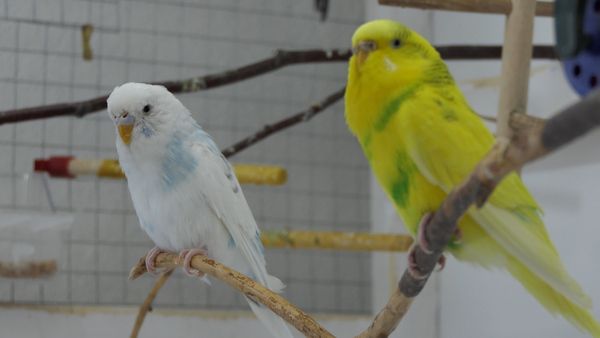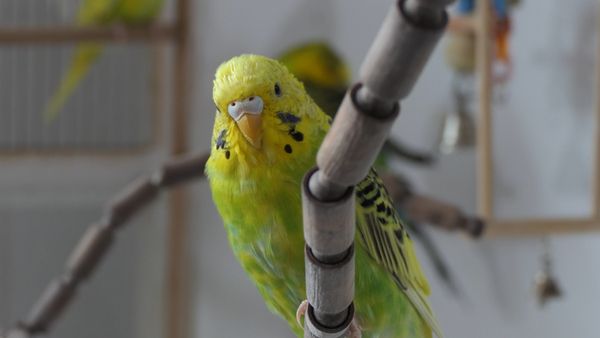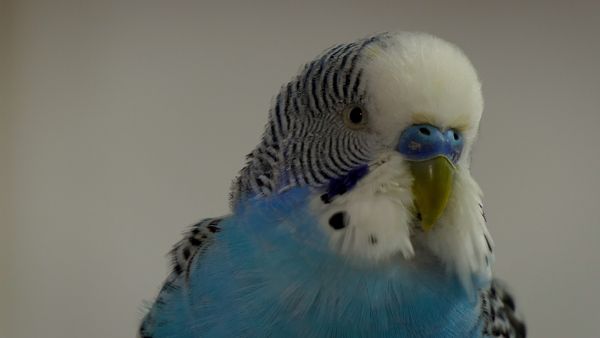For pet lovers, who would not mind having a budgie bird as a pet, budgies are one of the best pets to have.
“The most animated, cheerful little creatures you can possibly imagine.”
– John Gould, ornithologist and bird artist, describing Budgerigars in the 1800s
Humans have been known to be lovers of nature since ages ago. This has resulted in the petting of various animals. Other than dogs and cats, birds can also be wonderful pets. There are several birds kept as pets, including budgerigars or budgie. In general, budgies are third most popular pet to man. They gained their popularity from their ability to mimic human voices and their beauty. Do you have a taste for pets? Budgies might just be the answer. Interestingly, they are rather cheaper than one may anticipate. This blog discusses more about budgies.
Though the origin of the name budgerigars is not known, they have been bred since the 19th century. They are nomadic parakeets mostly found on drier sides of Australia. They are mostly identified through their light green feathers. A full-grown budgie is about 18cm (7in) long and can weigh between 30-40 grams. Their wings are about 30cm when spread, with the upper parts displaying black marks. The lower edge consists of mostly yellow ripple. Furthermore, they also have upper beak-part that are longer than lower ones. One of the most distinctive features is their long tail that is dark blue with yellow flashes.
Male and Female budgies.
Just like most birds, it may be almost impossible to identify the difference between a male and a female budgie. Imagine buying a pair of same-sex unintentionally? That would be rather unpleasant and unnecessary. Check out for the minor clues to consider. The most identified difference is found on the nostrils or cere. This is just above the beak. Male ones have a light blue cere while the female counterparts have pink, white, brown, or tan cere.
They also display different behavior; Male ones are more outgoing and love socializing, sing more often, and do a lot of head-dobbing. Also, they are ready to learn. The female is bossy, tends to be louder, and like chewing frequently. In the wild, the latter will poke holes in trees to nest.
Why should you pet a budgie?
Most people who love petting animals have different reasons and mostly translates to their personality. In need of a fun colorful pet? Might consider a budgie. Most people would like to keep a pair (male and female). Due to their difference in personality, one may see it wise to get young ones or rather go for adult ones. These parakeets make a good companion when trained well and taken care of. Below are some of the reasons why having budgies may just be what one needs.

Talking
What else would be more pleasing than hearing one’s pet talk to them? Well, this is an assured feeling for those with this tiny bird. Just like or even better than the larger species of parrots, budgies can develop simple vocabularies overtime. Some even form as many as hundreds of words. It may be challenging at first to know what they are saying but those who are keen may find them to be chatterboxes. Budgies, mostly male ones, love mimicking sounds from the surrounding environment. Either from animals, birds, but the most interesting thing is that they are capable of even mimicking people. Just imagine how entertaining that is.
Loyal, Loving, and Affectionate
Though most people just limit them as beautiful birds and would prefer to watch them, either in pairs or colonies, they are easily tamed. They can be good friends to people. When they recognize the owner, they can freely land on the hands, shoulders, and even allow to be cuddled. With frequent and enough contact, one can turn a budgie into a close companion. On a side note, they can be victimized by notorious children. Friendly ones can easily get along well. For little kids, please use protective gears since the beaks may hurt those sensitive little hands. How does one know the bird loves them? Well, just like any other pet, if treated well it will show gratitude. They express affection in different ways:
- Whistling – this is a common way they use to show they are contented with the owner’s presence. They will do so frequently. One can even train it how to whistle.
- Making noise – budgies are considered the noisiest pet birds. This is mostly due to their chanting, talking, and making all manner of voices around their owner. However noisy and annoying I may seem; this is a way of showing how happy they are.
- Talking – just like whistling, talking is one fun character about budgies. They learn easy words if taught. They also recall the most commonly used words in the house and say them. After mastering a word, they may never keep quiet about it. Mostly in the presence of the owner, they will say so to show appreciation and affection.
- Singing – one of the most things one will realize is that budgies keep tweeting. This is how they sing.
- Purring – this is a low sound of fluttering made by pets such as cats. Budgies will also purr mostly when near the owner. This shows how happy or affectionate it is to the master.
- Showcasing several movements – as it gets used to the owner, it will start to make several movements. After a long-absent day, it may offer greets such as wagging its tail. This is a way of showing respect, happiness, and contentment. Other times they also flatter their wings. Some even go to an extent of bowing as they come towards their owner.
What Needs to Be Known
It is undoubtedly fun to have this special budgie bird around. However, it will come with all sorts of responsibilities. From feeding, hygiene, caging, to keeping it healthy. Don’t know how to take care of a budgie? this article is here for that purpose.
Budgie bird Feeding
The chosen diet is very important as far as the budgie is concerned. It translates to general health and happiness. Palleted food is recommended especially those outlined for budgies only. Pallets should be preferred over seeds. Fresh vegetables are also a good nutritional boost. Mineral supplements (from bones of cuttlefish or mineral blocks for budgies only) are highly recommended. Water is a must. It should be available always. The drinker ought to be clean every time. Get a suitable one at a pet shop. If there is a change in the diet, patience is needed for it to adapt.
It is recommended that 2 spoons of seeds or pallets should be fed to budgies daily. With the supplements discussed above, one is good to go. Furthermore, there are various budgie friendly fruits to add to daily nutrition. They include; banana, apples, papaya, orange, mango, carrot, berries, pineapples, and melon. Always wash the vegetables and fruits to ensure no pesticides. Serve them raw. Nutritionists advise on giving the budgie low-fat foods to keep it in shape and not overweight. Reduce using sugary food too.

Hygiene of Budgies and accessories
General hygiene will keep the budgie bird in good health. Budgies require both environmental and personal cleanliness. Clean the cages, the water drinkers, and the toys. A daily bathing routine is recommended. There various ways to use it; One is the use of a bowl. A bowl is filled with lukewarm water, then placed at the bottom of the cage. The bird is then left to play as it rolls in the water. Retrieve it and leave the bird to dry. Always put a towel in the bottom of the cage to absorb spilled water. Soap should not be used since it irritates the skin. The other method is the use of spraying method. Here, lukewarm water is filled in the bottle then fine mist spray over the budgie is done. Leave it to dry naturally. Coldwater is not recommended.
Caging as a safe environment for Budgies
Bird professionals recommend a medium size cage of about 12 by 18 by 18 inches. The bird should be allowed to roam freely and preferably hand tamed. Should be confined in the cage only when resting or during transportation. They should be given the freedom to enter and leave as they please. For two of the birds, have a cage of about 20 by 39 by 20 inches to ensure more freedom.
Health is our first concern
In the wild, it may seem dangerous but trust me, being caged and confined in a household may pose more threat to the bird. Various disease-carrying bacteria are transmitted easily from man to the bird and vice versa. It is upon the owner to ensure the budgie is in good health. As discussed above, vegetables and fruits should be cleaned as well as the cages disinfected. Consult professionals on safe disinfectants to prevent side effects. Budgies in good health will mostly feed in the morning.

The loss of appetite may suggest that it is unhealthy. Other ways of knowing if it is unwell may include quietness. Budgies should be playful but if the silence is prolonged, may suggest it is unwell. Also, check the droppings. Healthy ones will have thick droppings that dry quicker while unhealthy budgies will have thin droppings. Ensure the claws are trimmed regularly and clean so as not to harbor dangerous bacteria. Budgerigars may be robust but sometimes fall victims to various diseases. Always acquire veterinary advice when unusual behavior is noted.
Taming the Budgie
What is the point of raising the budgie bird if one cannot enjoy its company to the fullest? Whereas the job of taming has been left to bird specialists, it is also possible to train a budgie at home. Just simple steps can be employed to ensure it falls in line. If in need of a budgie to tame, get a young one. A budgie bout 7 to 8 weeks is ok for petting. Start with the little ones it will be easier to make them friends.
The process itself is a fun activity. Imagine a bird repeating what one says! To start with, buy a budgie and take it home. Set up a comfortable cage. Give it some food as you speak to it gently. The cage should never lack toys. the bird will start to explore its environment if it is happy. After settling down the training can begin.

Approach slowly and gently
Be gentle, have a hand towel in your hand, and advance towards the cage slowly as you speak to the bird softly. Place the towel over it and remove it from the cage slowly. Use your hands to cuddle the bird. Chasing it around the cage is not recommended. Being tender will do wonders in pulling the bird towards the owner.
Finger training
As a parakeet lover, there is nothing more than the feeling of opening the cage, and the bird steps to one’s finger. This is also made easy by making sure there is trust from the pet. At first, it may not be comfortable to react to the advances made. A wooden perch can be employed instead. Here it will gain the confidence to a point where it can freely be in your hands. All the time learn to praise it by telling how good it is and how happy one feels about it. It may not understand what is being said but, be sure it will read the loving expression and know that it is appreciated. After every successful training, repeat it severally. At an advanced stage offer it a different hand and it will lift the leg and move to it. At this point, the budgie bird becomes a good friend of the owner.
Fun fact.
Budgies are commonly light green but have been bred into different color combinations such as; yellow, white, albino, periwinkle, green/yellow. And other breeds that will suit the buyers’ needs. It is the number one petted bird around the world.
What we learned about Budgie?
For pet lovers, who would not mind having a bird as a pet, budgies are one of the best pets to have. They are easy to keep, occupy less space considering that the cages can be hanged. If in need of a pet, at least go for a talking one. This article recommends a budgie to all bird lovers.
Recent Posts
Have you ever dreamt of personalizing everyday objects or unleashing your creative spirit through precise, detailed engravings? Look no further than the Longer RAY5 20W Laser Engraver, a powerful...
Imagine a world where your imagination can paint pictures. That's the power of artificial intelligence (AI) in the realm of art, and budgies, those vibrant and curious companions, are taking center...


